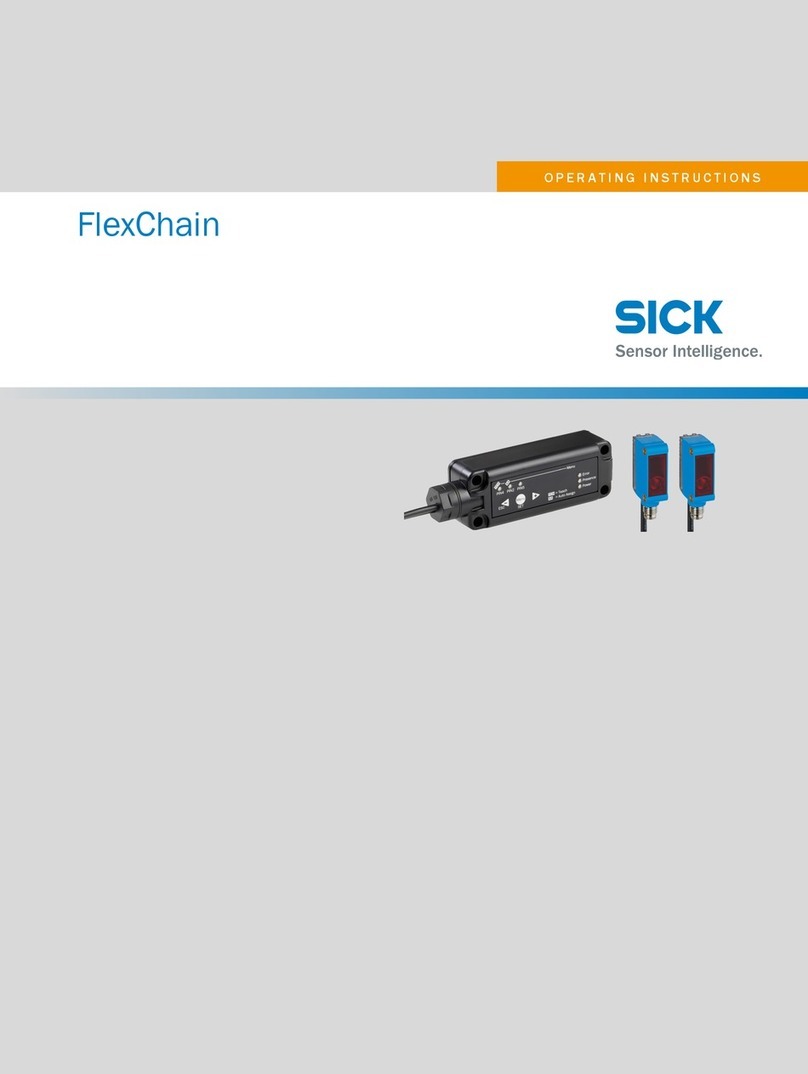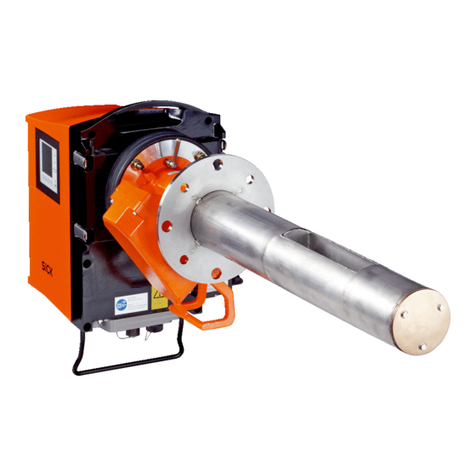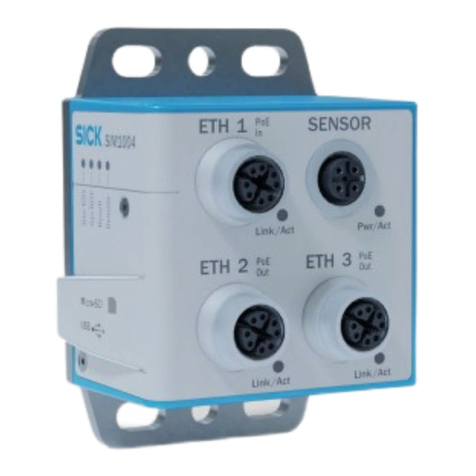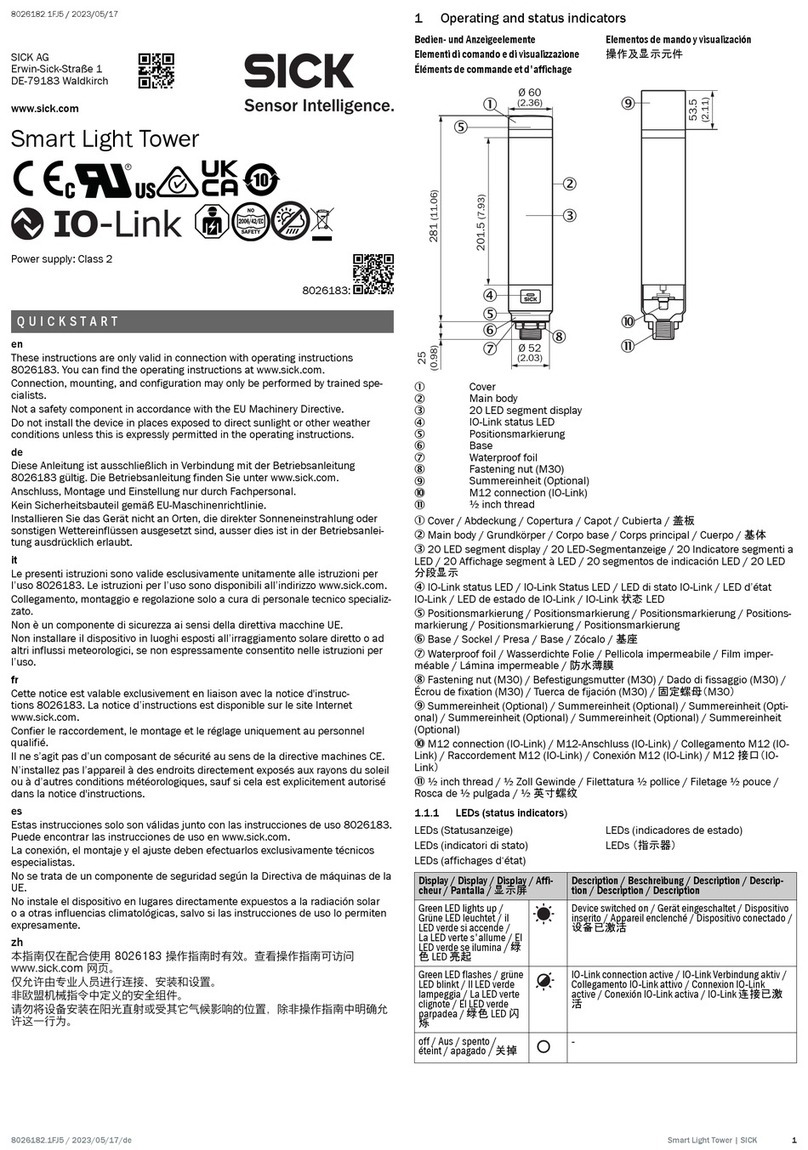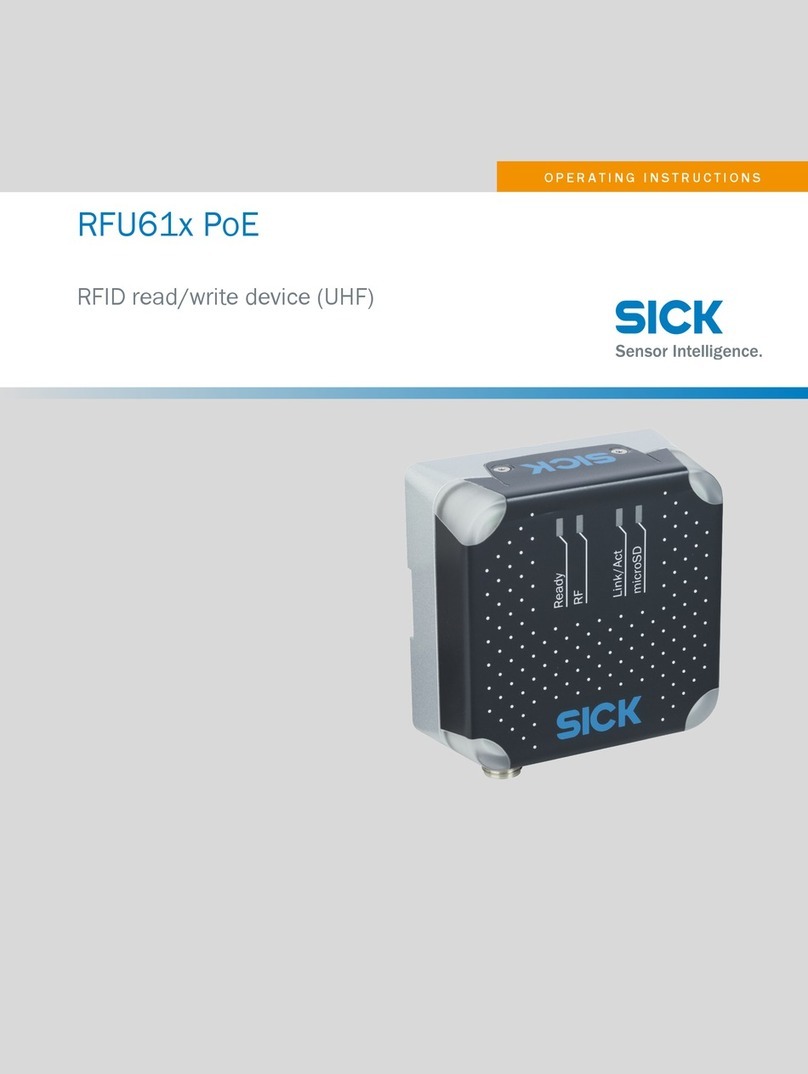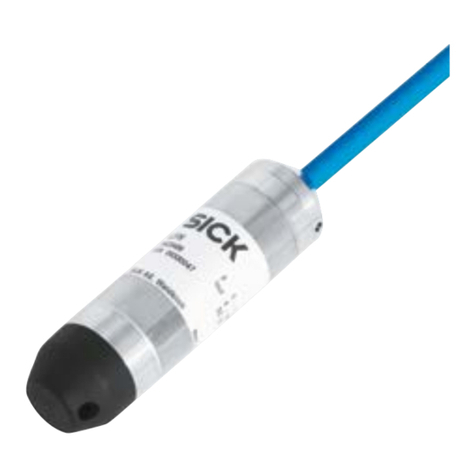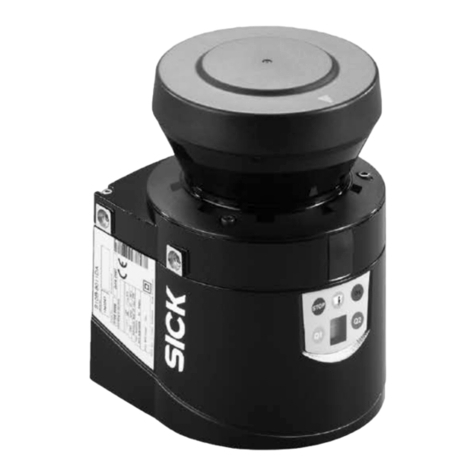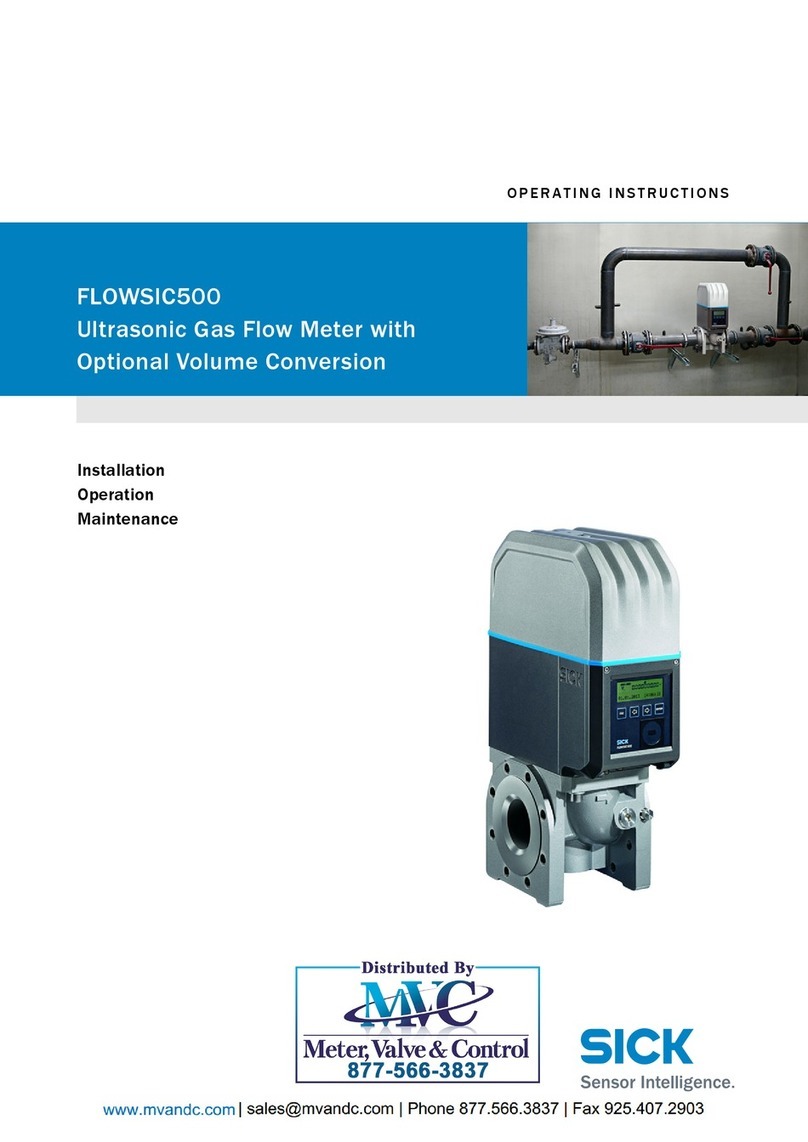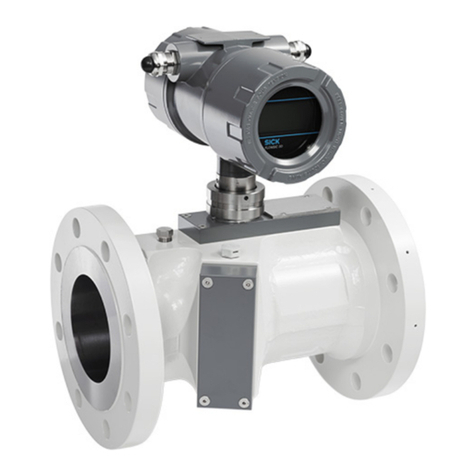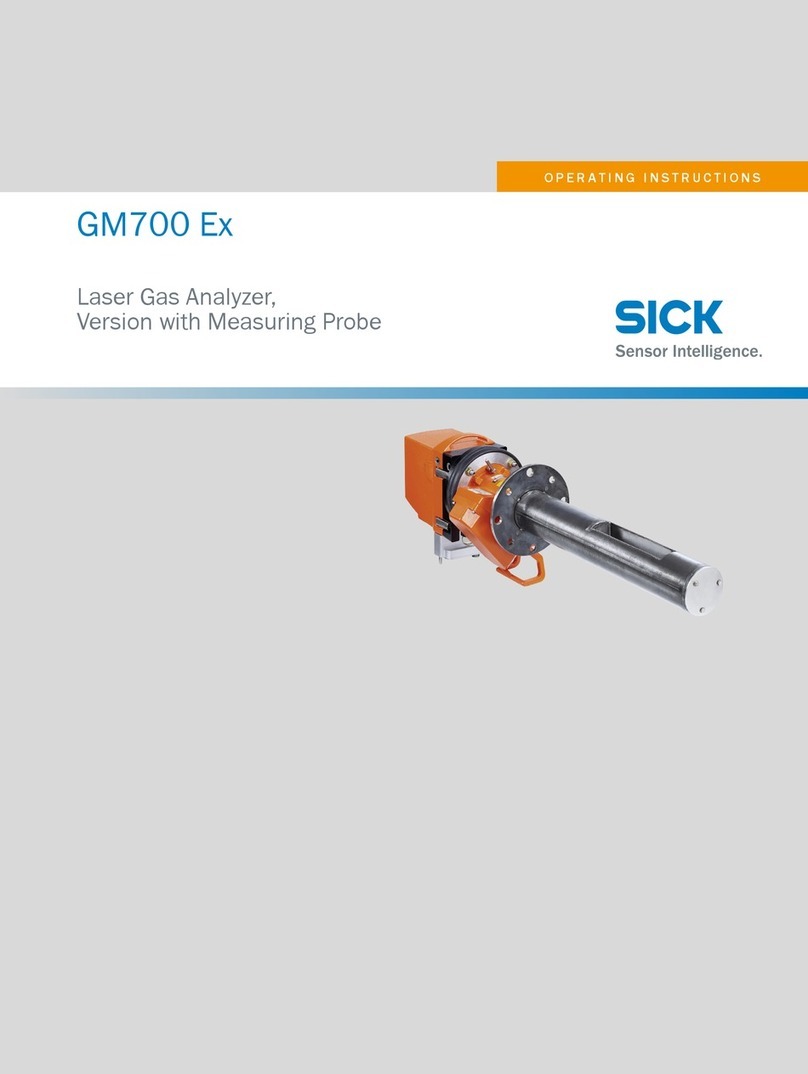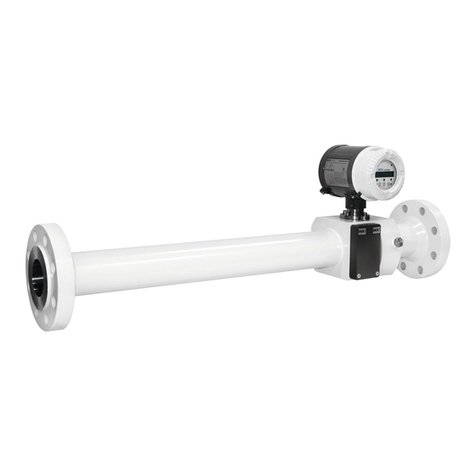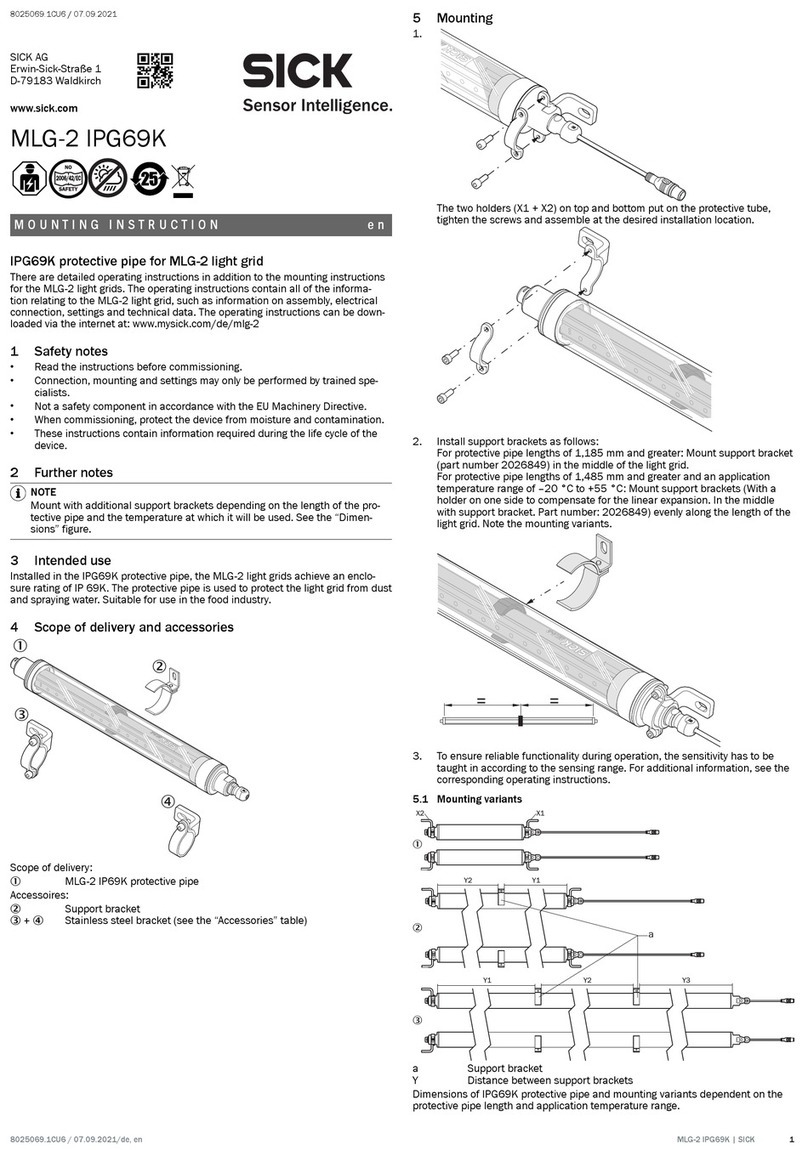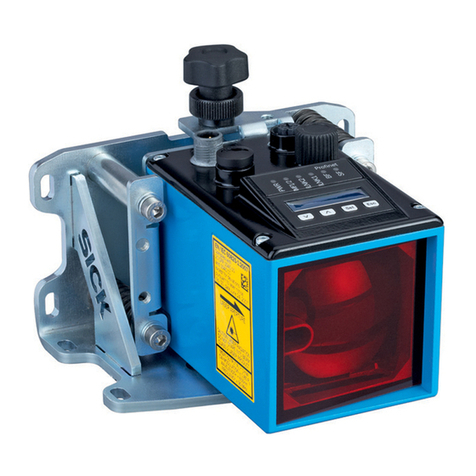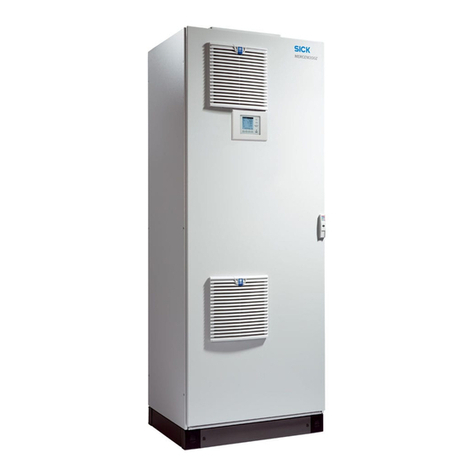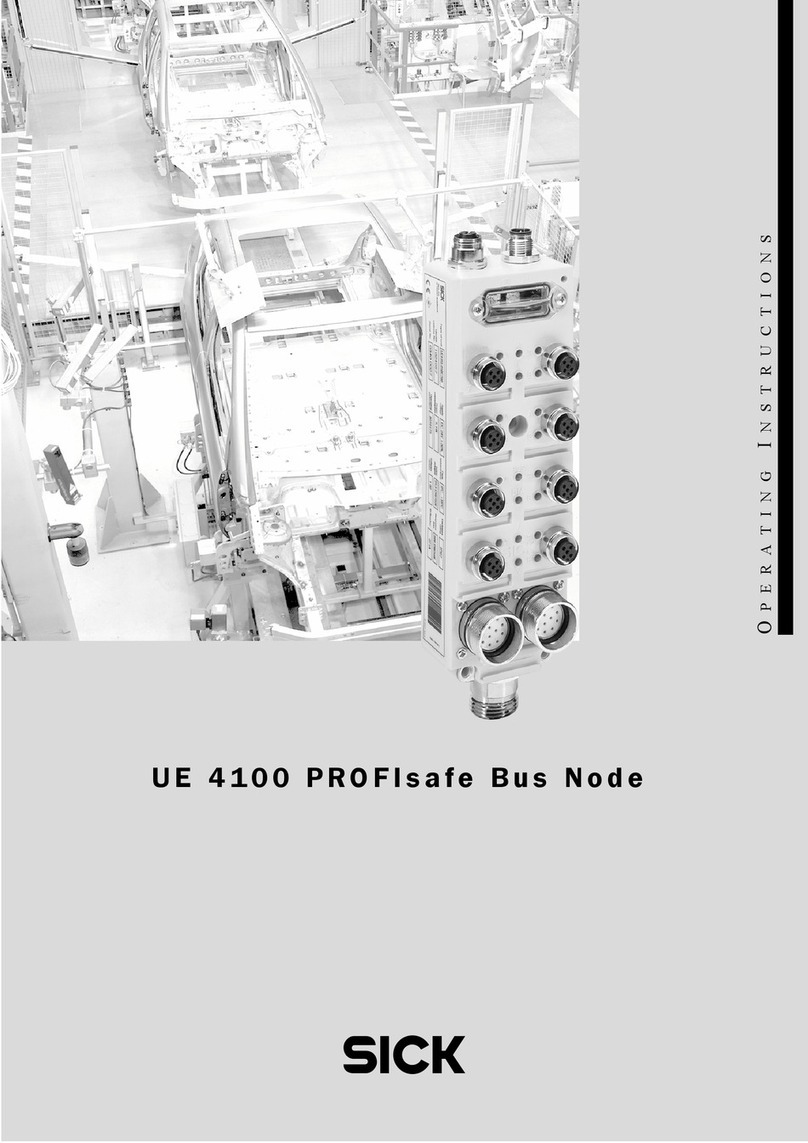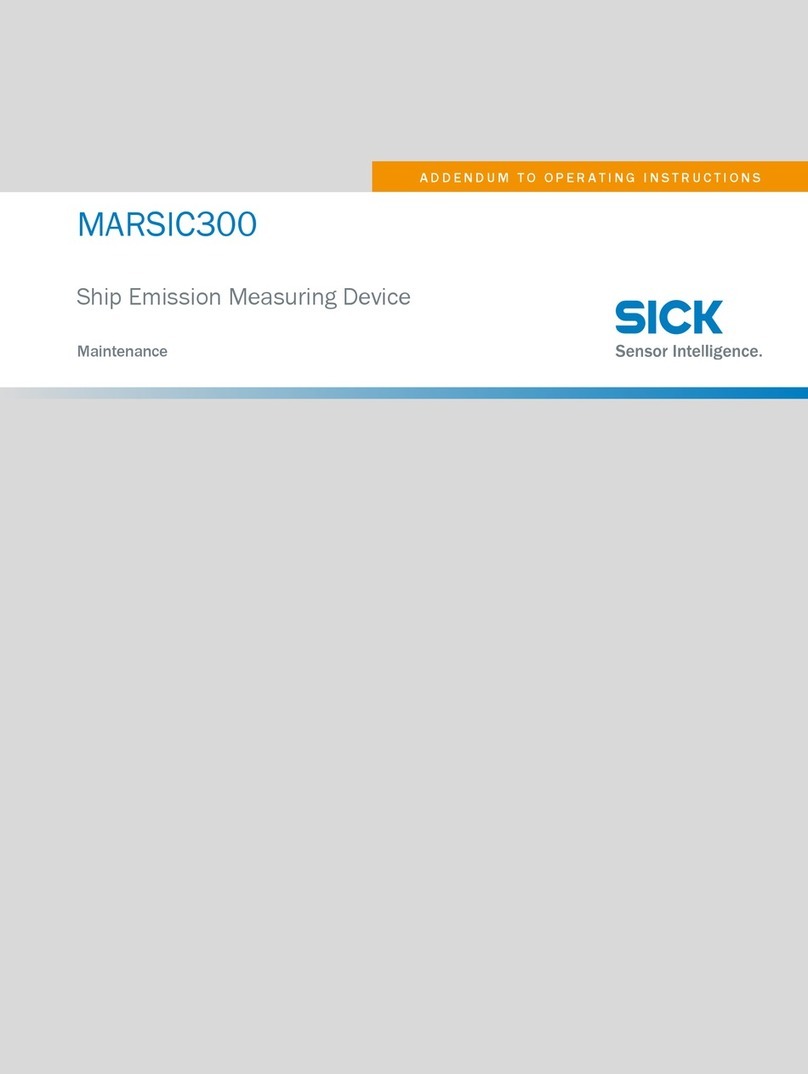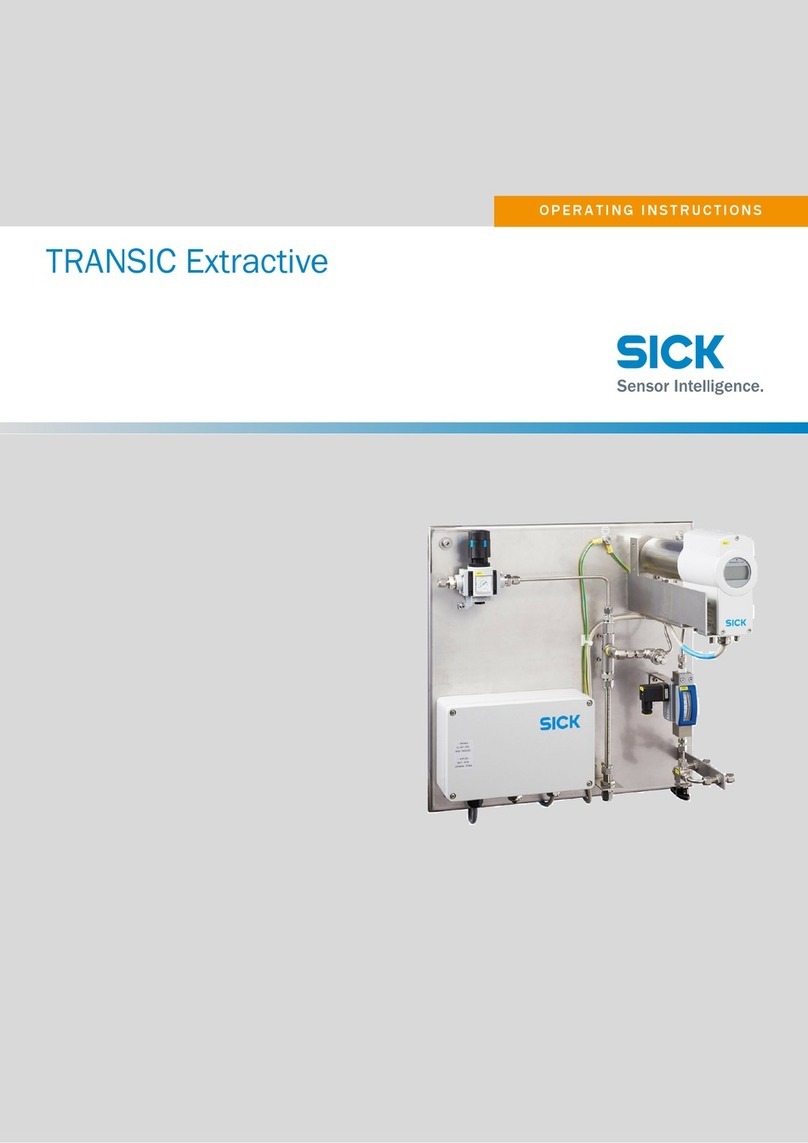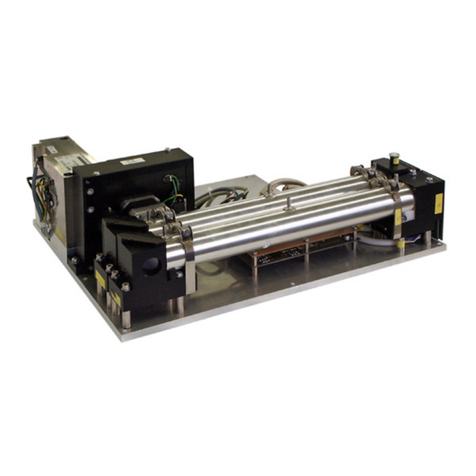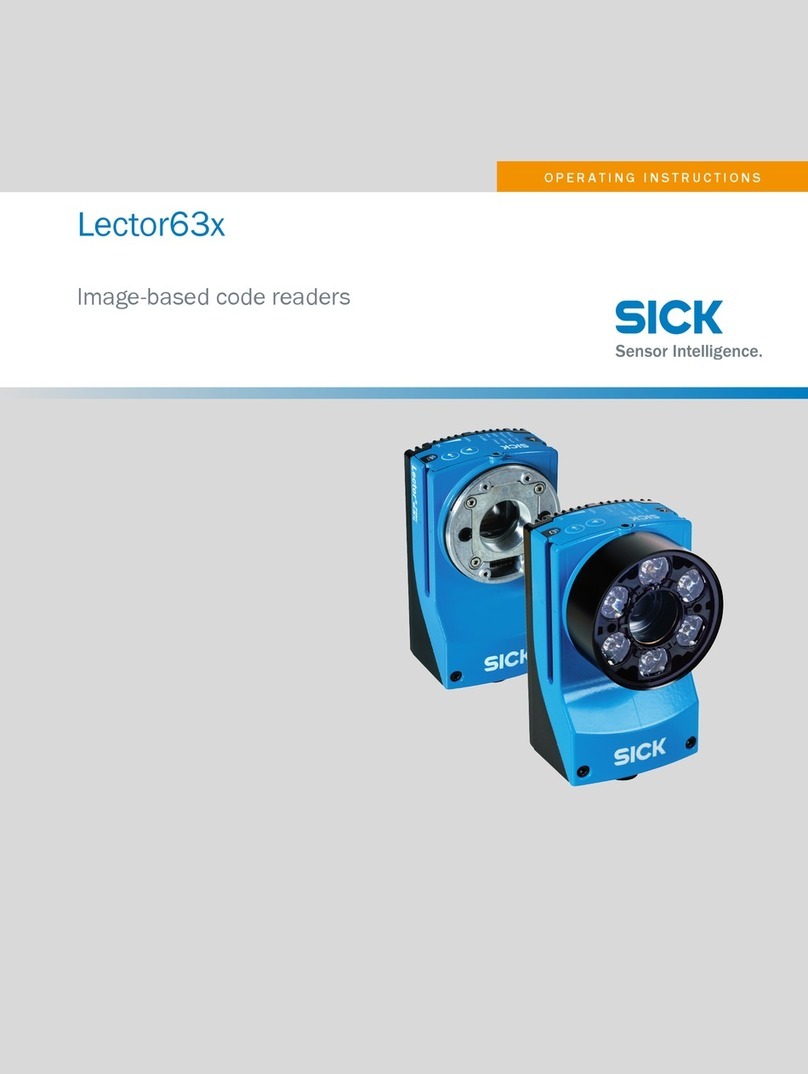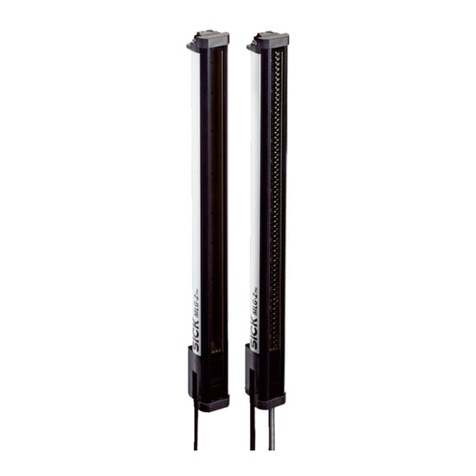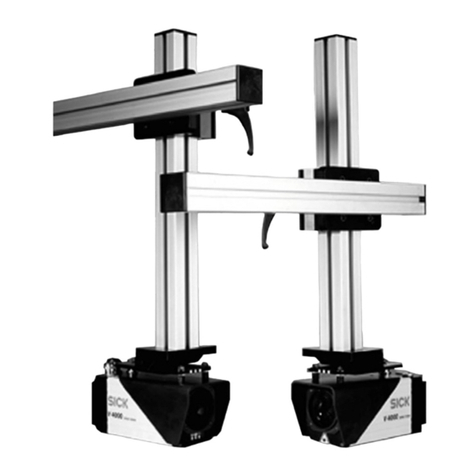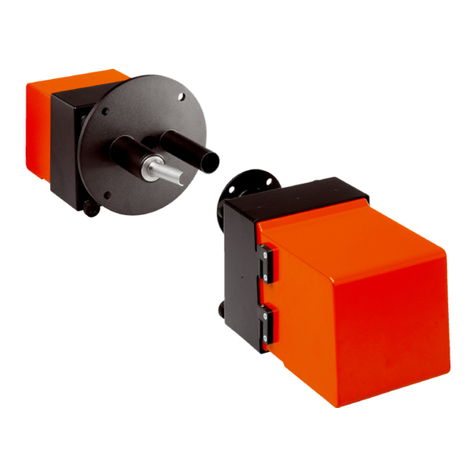
CONTENTS
8020776/12AX / 2019-05-31|SICK
OPERATING INSTRUCTIONS|Free Flow Profiler
Subject to change without notice
4Mounting .........................................................................................................................49
4.1 Mounting 2D LiDAR sensors .............................................................................49
4.1.1General advice ....................................................................................49
4.1.2 Mounting positions of the 2D LiDAR sensors ...................................50
4.1.3 Mounting accessories for the LMS511 2D LiDAR sensor................52
4.2 Mounting the Traffic Controller FPS..................................................................55
4.3 Mounting the Ethernet switch ...........................................................................55
5Electrical installation.....................................................................................................56
5.1 General advice ...................................................................................................56
5.2 Wiring overview ..................................................................................................56
5.3 Connecting the Traffic Controller FPS...............................................................57
5.3.1 Connections on the Traffic Controller FPS ........................................57
5.3.2 Connecting to the voltage supply.......................................................58
5.3.3 Connection to Ethernet switch ...........................................................59
5.3.4 Connecting to the customer interface ...............................................59
5.4 Connecting the Ethernet switch to the voltage supply ....................................60
5.5 Connecting the 2D LiDAR sensors ....................................................................60
5.5.1 Connections on the 2D LiDAR sensor................................................60
5.5.2 Connecting to the voltage supply.......................................................61
5.5.3 Connection to Ethernet switch ...........................................................62
5.6 SICK connecting cables .....................................................................................63
6Commissioning ...............................................................................................................64
6.1 Starting the profiling system .............................................................................64
6.2 Connecting to TEMS Manager...........................................................................64
6.3 Configuring the IP address of the Traffic Controller FPS .................................65
6.4 Setting up the site configuration with the wizard.............................................68
6.4.1 Selecting components ........................................................................69
6.4.2 Specifying the measurement site layout ...........................................70
6.4.3 Selecting a region ...............................................................................71
6.4.4 Defining the classification system .....................................................72
6.4.5 Completing site configuration ............................................................73
6.5 Working in TEMS Manager ................................................................................74
6.5.1 The user interface...............................................................................74
6.5.2 Displaying the measurement site ......................................................77
6.6 Adapting system functions to the measurement site......................................80
6.6.1 Configuring the measurement site ....................................................80
6.6.2 Configuring system functions for vehicle detection..........................83
6.6.3 Configuring system functions for axle counting ................................90
6.7 Working in expert mode.....................................................................................93
6.7.1 Displaying the system parameters and system status.....................93
6.7.2 Displaying system functions for vehicle classification .....................95
6.7.3 Working with the Axle Overruler.........................................................96
6.7.4 Configuring plug-ins ............................................................................96
6.8 Running the configuration .............................................................................. 100
6.8.1 Checking operational readiness ..................................................... 101
6.8.2 Displaying measurement points ..................................................... 103
6.8.3 Displaying the device status ........................................................... 104
6.8.4 Switching back to editing mode...................................................... 104
6.8.5 Saving the configuration on the hard drive .................................... 105
